Education Animations
Educational animations are animations produced for the purpose of promoting learning. Computer Generated Imagery (CGI) has allowed animations to help learners understand and remember information to be produced much more easily and cheaply than in former years. Traditionally animation required specialized labor-intensive techniques that were both time-consuming and expensive.
Computer animation is good for depicting dynamic content because animations can show changes over time (temporal changes) which is especially useful for teaching processes and procedures. Animations can mirror both the changes in position (translations), and the changes in form (transformation) that are fundamental to learning this type of subject matter.
EDUCATIONAL EFFECTIVENESS
Research evidence about the educational effectiveness of animations is mixed. Various investigations have compared the educational effectiveness of static and animated displays. While there have been some findings that show positive effects of animations on learning, other studies have found no effects or even negative effects. In general, it can be concluded that animations are not intrinsically more effective than static graphics. Rather, the particular characteristics of individual animations and how they are used play a key role in the effects that they have on learning.
Well-designed animations may help students learn faster and easier. They are also excellent aid to teachers when it comes to explaining difficult subjects. The difficulty of subjects may arise due to the involvement of mathematics or imagination. For instance, the flow of electric current is invisible. The operation of electric circuits is difficult for students to understand at the beginning. With the aid of computer animations learning and teaching becomes easier, faster and amusing.
However, some animation applications lack educational effectiveness usually because the target learners can’t process the presented information adequately. When the subject matter is complex, learners can be overwhelmed by animated presentations due to the role of visual perception and cognition in human information processing. Our human perceptual and cognitive systems have limited capacities for processing information. If these limits are exceeded when using an animation, learning may be compromised. For example, the pace at which the animation presents its information may exceed the speed at which the learner can process it effectively.
Slowing the animation down and accompany it with a written explanation is one solution. Another suggestion for addressing such problems is to provide the learner user control over how the animation plays. User controllable animation allows learners to vary aspects such as the playing speed and direction, labels and audio commentary.
ANIMATION PERCEPTION
Complexity of the subject matter may not be the only reason for difficulties that learners sometimes have with animations. It seems that problems can also arise from the perceptual effects of such presentations. In a poorly designed animation, the information that learners notice most readily in the animation may not be the information that is of greatest importance. Conversely, information that is relatively inconspicuous may be very important. Animations should not appear in a vacuum and most will require accompanying explanation.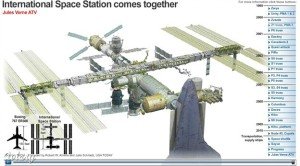
Obviously, perceptibility of information does not necessarily correspond with its actual relevance to the learning task to be performed. Features of the animated display that are most conspicuous because of their contrast with the rest of the display are not always the best place for learners to direct their attention. In other words, there can be a poor correspondence between the “noticeability” of a feature and its relevance and an accompanying text is needed to correct this.
This correspondence problem can occur with both static and animated graphics. On a purely perceptual level, our attention tends to be attracted by some parts of a static display more than by other parts due to their visio-spatial properties. For example, an object that is centrally placed, relatively large, unusually shaped, and of a sharply contrasting color or texture is likely to ‘jump out’ of the display so that we notice it very easily.
Other items in the display may receive correspondingly less attention as a result. Well-designed static educational graphics take advantage of these perceptual effects. They manipulate the characteristics of the display in order to direct learner attention to the most relevant information. Unfortunately, there are many ‘educational’ graphics being produced that fail to provide learners with sufficient support. Designers of animation need to take such consideration into account.
DYNAMIC CONTRAST
The correspondence problems due to perceptual characteristics of a display are compounded when we go from a static to an animated graphic. Because of their dynamic character, educational animations introduce a further challenge to information extraction beyond those found with static graphics. Certain aspects of a display that changes over time have the potential to capture learner attention. If there is sufficient dynamic contrast between one or more items in the display and their surroundings, the effect can be very compelling in a perceptual sense. It seems that a fundamental level, our perceptual system is attuned to detect and follow such changes, irrespective of their importance in terms of the subject matter.
The misleading effects of dynamic contrast are likely to be particularly problematic for learners who lack background knowledge in the content domain depicted in an animation. These learners can be largely in the thrall of the animation’s raw perceptual effects and so tend to process the presented information in a bottom-up manner. As a result, there is a danger that they will attend to unimportant information merely because it is perceptually compelling. However, learners who already have background knowledge are likely to be less influenced by perception alone. This is because their attention is also directed to a considerable extent by their knowledge of which aspects of the subject matter are of most relevance irrespective of their perceptibility. As a result, their processing of information in the display has a more top-down character.
Animation software is now available that makes it possible for even individual educators to author their own animations without the need for specialized expertise. Teachers are no longer limited to relying on static graphics but can readily convert them into educational animations. For example, PowerPoint now has an easy-to-use animation facility that can produce very effective educational animations. Wikipedia
THE ADVANTAGES AND DISADVANTAGES OF ANIMATION TECHNOLOGY IN EDUCATION AND TRAINING
(The following is an abstract from a master’s thesis by Adel M. Agina, at TO of Twente University, The Netherlands, 6/24/2003.)
Advantages of Animation Education
People are always looking for new ways to educate their children. If they are having fun, they learn better. Computer animation can be used to make very exciting and fun animations into which education and training can easily be incorporated.
It is much more interesting to learn math for example when the letters are nice and colorful and flying around the TV screen instead of solving problems on plain black and white paper. Other subjects such as science, English, foreign language, music, and art can also be taught by using computer animation.
Because they have control of all aspects of the program instructors can use computer animation to demonstrate things visually exactly how they want them. In science for example, the computer animation might be used to show how our solar system works, and in math, a computer animation might show a student how one can algebraically manipulate specific equation.
A lot of things like chemistry and physics are too small to see, handle, doing experiments on, or even trying to imagine them like atoms and molecules for example. Computer animation is the perfect tool for those things because instructors can create realistic models of those things like atoms and molecules from the data they have and look at the way these molecules will interact with each other. They can therefore make an animation experiment exactly like the realistic in the lab with regard to materials and results. Animation is used in visualization to show the time dependent behavior of complex systems.
Generally, the common benefits and advantages of the animation in education and training can be cited in the following items:
1. Skill and Ability Improvement
The interactive animation takes less time to learn student complex things and makes them enjoy more to learn difficult things. Education and training are higher when information presented via computer animation systems than traditional classroom lectures. Using an interactive animation will solve the problem of the imagination-skill in education and training. Therefore, the ability to practice new concepts in a risk-free environment improves learners’ skills and abilities. Computer animation also improves the skills and ability of instructors because they will be able to improve their way of teaching.
2. Interactivity
Interactivity is a mutual action between the learner, learning system, and learning material. Learners will be faster to learn, and have better attitudes toward learning when using interactive animation especially if the other techniques like audio and video are used.
3. Engagement
Interactive learning with live-action animation, simulation, video, audio, graphics, feedback, expert advice, and questions and answers keep learners interested and reinforce skills. Because it is exciting, challenging, and fun to use it encourages learners to return to the program again and again. Through continual practice, learning is absorbed and integrated into daily performance.
4. Flexibility and Safety
A lot of things are dangerous to be carried out in the real-life learning such as experiments in physics and chemistry. Computer animation can offer the following issues:
- Many experiments cannot be carried out in the classroom because they are dangerous, and yet learners will need these skills in the workplace.
- Animation programs can represent these dangerous events without the hazards.
- If the learner were to make a mistake, the experiment can be repeated without injury.
- Real-life experiences are not readily available, but an animated trip in the past brings the learner some feeling of what it must have been like.
- The main flexible issue of the animation is to show the non-possible matters in the real-life learning.
- Learners can use discovery-based learning by having more interaction with the content and are thus more likely to assimilate the knowledge, skills and concepts involved.
5. Motivation
Since animation is an inspired and interactive way for flexible education and training, learners will be more motivated to learn more and more. Learners will get more skills, which is the main reason to make them more motivated.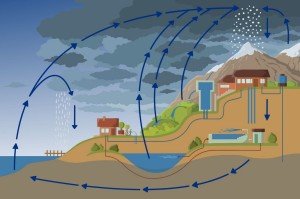
6. Eliminates frustration
Computer animation is a high-level way to measure the learners’ decision making. It can adapt to user’s choices and react in different way to explore what would happen if that case will apply. Computer animation allows learners to measure their abilities to perform a specific task or job without any risk. This will help them avoid frustration. The measurement of learner ability could also be done for a huge number of learners with highly speed and cheap. This could be a critical point for ROI of education and training. As a result, learners will not encounter experiments that do not work as a result of faulty apparatus or techniques.
7. Practicality
Computer animation is capable of presenting true-to-life situations that learners face every day. Humans are very practical learners—they learn better when faced with real problems that have real consequences. Computer animation allows learners to learn-by-viewing, learn-by-doing or learn-by-coaching. All are effective methods for developing practical skill and increasing information retention.
8. Consistent
All learners learn the same principles and skills. Computer-based Animation typically forces instructional designers to better organize and structure learning materials, and this alone can result in learning advantages.
9. Immediate Feedback
Learners will get an immediate feedback from the animation system that will enhance their skills and abilities. During the process of the animation, instructors can open free-discussion among learners, which will effect positively over the entire classroom. It’s important to note that the learners’ feedback could be useful to improve the animation system itself.
10. Attracting and Holding Attention
Animation is useful when the need to quickly get and hold an audience’s attention is important. For example, like when animation is used to show the invisible phenomena in chemistry or physics interactions.
11. Showing Prototype Designs
Animation is a dynamic tool for designing objects that do not yet exist in reality. It offers perfect support for:
- Architects designing buildings
- Engineers envisioning structural designs
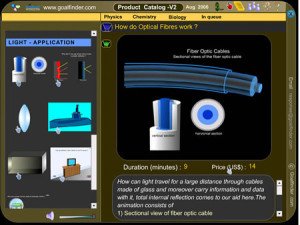
- Equipment manufacturers building prototypes
- Automobile manufacturers creating next year’s model
12. Creating models of data
Since animation can be so easily manipulated, it is a good tool for creating three-dimensional models using scientific data. For example, a researcher can create a model of:
- A molecule
- Ozone thickness based on atmospheric readings
- The ocean floor based on sonar readings
13. Showing Processes or Relationships not Usually Visible
Since animation can show imagined objects in motion, it is ideal for demonstrating processes and relationships that are impossible to observe in reality. For example, geological events like earthquakes or erosion patterns.
14. Isolating Specific Actions in a Complex Sequence
Animation can show motion for part of a complex operation, thus clarifying functions that would otherwise be impossible to isolate and view independently. For example, blood circulating through the body.
Disadvantages of Animation Education
Generally, computer animation is similar to computer simulation with regard to some limitations in some education and training cases. The following are some possible limitations of using animation in education and training:
- Some information of real-life learning will be lost in the animation program.
- Computer animation programs may function well from a technical point of view, but they are difficult to fit into a curriculum.
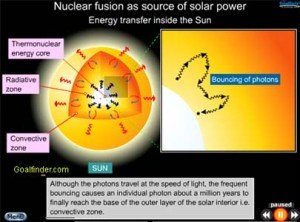
- Not being adaptable to take into account different student levels within a group or class. To implement this, teachers must have certain programming technology and experience skills. So it is not easy for every teacher.
- During the experience of interaction with a computer animation or simulation program, the student is frequently asked to solve problems in which creativity is often the decisive factor to success. The fact that is, this creativity is more present in some pupils than in others is not taken into account by the animation or simulation programs. The mutual collaboration and discussion among students while using the software could be a solution for this.
Technical Disadvantages of Using Animation Technology in Education:
- Requires extensive memory and storage space: Since the animation consists of a series of graphic objects and mathematical calculations, it uses more system processing and storage resources than graphics and text.
- Requires special equipment for a quality presentation: While some good animation can be created using a basic graphics package, producing quality animation requires specialized software and programming and educational knowledge.
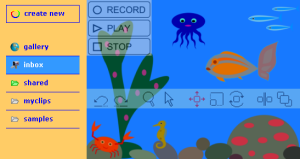
- Cannot depict actuality like video: Since animation is an artist’s re-creation, it does not depict actual events or reality as a video does. Therefore, it cannot show specific people, places, or things. Animation is ideal for support in marketing, training, and research. It is best used to attract attention or to show processes and events that either do not exist in reality or are not apparent.
Conclusion
Computer animation has many advantages than the traditional way of education and training. The motivation and skill improvement are the main benefits. The main goal of computer animation is to reduce learners’ time and useless effort of learning, and to make it more practical and task-oriented. Nevertheless, it also has some limitations that create some of disadvantages.

Recent Comments